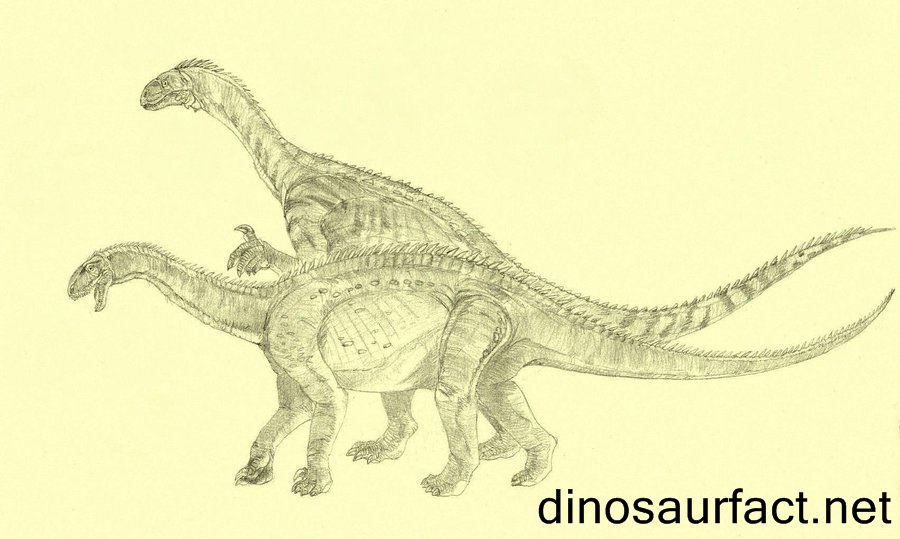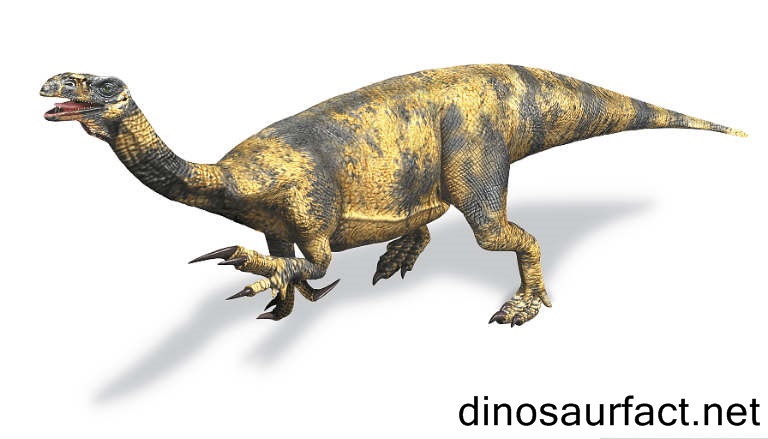 Click to visit the previous dinosaur bio
Click to visit the previous dinosaur bio
 |
|
 |
|
Kingdom: Animalia
Phylum: Chordata
Class: Sauropsida
Superorder: Dinosauria
Order: Saurischia
Suborder: Sauropodomorpha
Genus: Antetonitrus
 |
|
 |
|
 |
|

The Antetonitrus is the genus of transitional sauropodomorph dinosaur found in the Triassic rocks in South Africa. The Dinosaur was named Antetonitrus ingenipes. Almost 30 feet long and weighing about 2 tons, these were the earliest form of sauropods, ancestors of the famous Jurassic giants. Antetonitrus, which in Greek means ‘Before the thunder’ was not fully grown and was at the adolescent stage. It was the largest known dinosaur during the later Triassic period. These giants lived on earth some 210-215 million years ago and the species Antetonitrus was a transitional sauropodomorph because it displayed characteristics of both sauropods and sauropodomorphs.
About the fossils
The fossils of this 8-10 meter long herbivore were discovered by South African expert, James Kitching in 1981. It was discovered on the farmland in the Lower Elliot Formation, LadyBrand District, Orange Free State of Africa. The findings were labelled as Euskelosauraus and were stored on the shelves of Witwatersrand University’s Bernard Price Institute in Johannesburg, South Africa. The fossils which were discovered included a cervical centrum, four dorsal vertebrae, sacral vertebrae, caudal vertebrae, dorsal ribs, chevrons, scapulae, right humerus, both ulnae, and more. The fossils were originally discovered in 1981, but the dinosaur got its real identification in 2003. Adam Yates, an Australian expert with the help of his intense research revealed that the fossils were of a sauropod and exhibited characteristics of both the sauropods and the sauropodomorphs.
Additional findings
Along with the fossils of Antetonitrus, bones of a younger Dinosaur were also discovered but speculations are on whether it belongs to the same genus or is from a different family group.
Transitional features
The transitional features of Antetonitrus was a major discovery as it helped to understand the earlier forms of dinosaurs and the period before the great Jurassic giants ruled the world.
- Like the sauropods, all the four legs i.e. the fore limbs and the hind limbs were of equal length thus making them quadrupedal. However, they also switched to walking on two legs like the sauropodomorphs. Thus they were capable of switching to walking on four limbs and two limbs.
- Unlike the sauropods, the Antetonitrus had flexible thumb also called pollex, which made it possible for them to grasp things with the help of their hands.
- The hind foot’s first toe stood on a large claw which was longer than the metatarsal. But like the sauropods feet, it was not sickle shaped.
- The femur of the Antetonitrus dinosaur was to some extent sigmoidal rather than being straight.
Inferences made from the study of the fossils
- The evolution of the Jurassic giants happened much faster than what was thought of earlier because with the discovery of Antetonitrus, it was clear that this was the earliest evidence of dinosaurs walking on four feet instead of two.
- The thickness of the bones in the inner toes of the hind feet indicated that the dinosaur was a bit pigeon toed meaning its body weight was primarily borne by its fore legs which were till then not well adapted for bearing the weight of the enormous creature.
- Yates findings concluded that the Antetonitrus was a pure herbivore and never ate meat unlike the opportunistic sauropodomorphs.
Classification
The Antetonitrus is positioned between the animals like Isanosaurus and Melanorosaurus. It has been documented as a basal sauropod by Yates and Kitching, the experts who brought out the real Antetonitrus. If categorized according to chronology, it is the oldest known sauropod. Fossils of dinosaurs such as Melanorosaurus, Blikanasaurus and Antetonitrus were discovered from the Lower Elliot Formation as well.
Etymology
The name Antetonitrus is derived from two Latin words which are ‘ante’ meaning ‘before’ and ‘tonitrus’ meaning ‘thunder’. Thunder refers to the other sauropods which evolved much later. Sauropods are famously known as ‘thunder lizards’ due to their ferocious history. On the other hand, the only species belonging to the genus Antetonitrus, ‘A Ingenipes’ also has its name’s origins. The word ‘Ingenipes’ comes from another Latin words, ‘ingens’ meaning massive and ‘pes’ meaning ‘foot’. This name suggests that this was the period of the dinosaurs whose feet were adapted to bear the body’s weight.
Conclusion
The discovery of Antetonitrus added one more branch to the family tree that exists with respect to the dinosaur lineage. This tree keeps changing as more and more fossils are discovered. South Africa is famous for its rich fossil heritage and due to the land characteristics of those ancient periods, many more findings about Dinosaurs still await the paleontologist’s eye.Index
Extinct Profiles
 Triassic Dinosaurs
Triassic Dinosaurs Jurassic Dinosaurs
Jurassic Dinosaurs Cretaceous Dinosaurs
Cretaceous Dinosaurs Pterosaurs
Pterosaurs Marine Reptiles
Marine Reptiles Dinosaur Extinction
Dinosaur Extinction